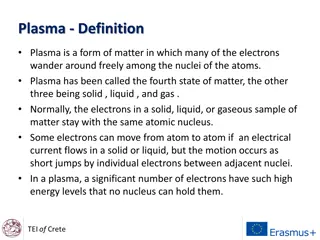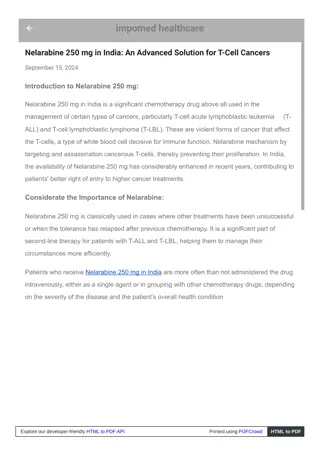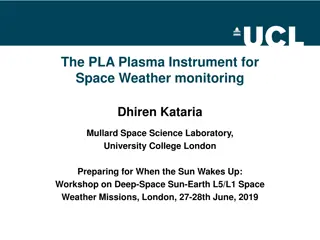
Plasma Cell Dyscrasias and Related Conditions
Learn about plasma cell dyscrasias, including plasmacytoma, plasma cell leukemia, and solitary myeloma. Understand the characteristics, symptoms, and diagnostic methods for these conditions through detailed images and descriptions.
Download Presentation

Please find below an Image/Link to download the presentation.
The content on the website is provided AS IS for your information and personal use only. It may not be sold, licensed, or shared on other websites without obtaining consent from the author. If you encounter any issues during the download, it is possible that the publisher has removed the file from their server.
You are allowed to download the files provided on this website for personal or commercial use, subject to the condition that they are used lawfully. All files are the property of their respective owners.
The content on the website is provided AS IS for your information and personal use only. It may not be sold, licensed, or shared on other websites without obtaining consent from the author.
E N D
Presentation Transcript
PLASMA CELL DYSCRASIAS Plasmacytoma and plasma cell leukemia
SOLITARY MYELOMA (PLASMACYTOMA) 3 to 5% of plasma cell neoplasms present as solitary lesions of either bone or soft tissue Extra osseous lesions : Lungs, oronasopharynx or nasal sinuses Progression to multiple myeloma is more common with osseous plasmacytomas, minimal with extra osseous lesions
PLASMA CELL LEUKEMIA Is rare; 2 4% of malignant PCD There are >20% of plasma cell in the peripheral blood with an absolute plasma cell count of >2000/ Cumm It may be primary, de novo (60- 70%) or secondary, evolving from a case of myeloma (Terminal phase) Shows higher frequencies of extra medullary involvement, anemia, thrombocytopenia, hypercalcemia & renal impairment
PLASMA CELL LEUKEMIA Serum lactate dehydrogenase levels& Beta2 M increased Plasma proliferative activity is more The incidence of lytic bone lesions is slightly lower than in Multiple Myeloma
FNA Biopsy of Plasma Cell Lesions Reactive Neoplastic Mixed inflammatory cells Pure plasma cells Mature plasma cells Immature plasma cells Surround vessels Form sheets Russell bodies Dutcher bodies






















